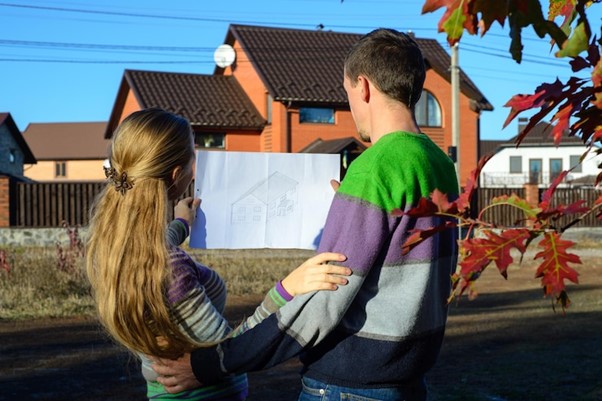Spain is increasingly becoming one of the most desirable destinations for long-term renters—thanks to its warm climate, rich cultural experiences, and relatively low cost of living compared to other Western European countries. From coastal villages to vibrant cities, there’s something for everyone looking to settle down. Whether you’re a remote worker, retiree, or relocating family, exploring affordable long-term rentals in Spain can open the door to a new lifestyle. But before diving in, it’s crucial to understand where to look and what to expect in terms of pricing, contracts, and local norms.
Why Spain Is Ideal for Long-Term Renting

Spain offers a variety of rental options ranging from modern apartments to countryside villas. The country’s lifestyle—relaxed, community-focused, and affordable—makes it a great choice for people seeking a better quality of life. In addition to the picturesque scenery and delicious cuisine, healthcare and public transport are accessible and efficient, further enhancing the appeal for long-term stays.
Whether your preference lies in the busy urban centers or quieter rural escapes, Spain offers diverse housing markets suited to various budgets and preferences.
Best Regions for Budget-Friendly Rentals
While Spain has several well-known cities, not all areas offer the same rental affordability. Here are some of the more economical locations to consider:
1. Valencia
A coastal city offering great weather, a rich cultural scene, and more affordable housing compared to Barcelona or Madrid. Valencia combines beach life with urban amenities, making it a popular choice for expats and locals alike.
2. Granada
Nestled at the foot of the Sierra Nevada mountains, Granada boasts historic architecture, lively student populations, and competitive rental prices. The presence of the University of Granada keeps rental demand high but still accessible.
3. Alicante
Known for its beaches and favorable climate, Alicante offers a relaxed coastal lifestyle with many apartments and homes priced lower than those in more tourist-heavy regions.
4. Seville
This Andalusian capital is culturally rich and offers plenty of housing in residential neighborhoods at reasonable rates. It’s an excellent option for those who prefer traditional Spanish charm over coastal living.
What to Expect in Terms of Cost
Rental costs in Spain can vary significantly depending on location, size, and type of property. Here’s a general idea:
- In less touristy towns, long-term rental apartments can start from €400–€600 per month.
- Mid-sized cities usually range between €600–€900.
- Larger cities like Madrid and Barcelona typically have higher starting points, from €900 upwards for central locations.
Most rentals are offered either furnished or semi-furnished, though unfurnished units can offer more space for less money. Utilities (electricity, gas, water) are generally not included in the rent and can add an additional €100–€150 monthly.
Understanding Rental Contracts
Long-term rental agreements in Spain are commonly structured around 12-month renewable contracts, governed by the Urban Leases Law (Ley de Arrendamientos Urbanos). Here are a few things to keep in mind:
- A one- to two-month security deposit is standard.
- Rent increases are typically aligned with Spain’s Consumer Price Index (CPI).
- Early termination often requires advance notice, typically 30 to 60 days.
Make sure to review the lease thoroughly—especially if it’s in Spanish. If needed, consult with a legal advisor or a trusted local to ensure you understand your obligations.
Amenities and Property Types
When searching for the best homes available for rent in Spain, it’s important to define what amenities matter most to you. In cities, apartments are the most common choice. In smaller towns and rural areas, you’ll find more houses, cottages, or duplex-style homes, often with outdoor spaces and lower rental costs.
Internet speed, heating systems, and air conditioning are important considerations, particularly for remote workers. Don’t assume these features are included—always confirm before signing the lease.
Navigating the Rental Process
Finding a rental in Spain is typically done through:
- Real estate agencies (inmobiliarias)
- Online platforms like Idealista, Fotocasa, and Pisos.com
- Local classifieds and word of mouth
Be cautious of online scams. Never make a payment before seeing the property in person or via a verified virtual tour. Always request a formal rental agreement and ask for the landlord’s official ID and property documents for verification.
Tips for Choosing the Right Neighborhood

Your experience in Spain can vary dramatically depending on where you choose to live. When evaluating the best places to rent houses, consider:
- Proximity to public transportation
- Safety and local community
- Access to shops, healthcare, and schools
- Vibe of the neighborhood—quiet or lively
Doing a short-term stay in your target area before committing to a long-term lease can give you a better sense of its daily rhythms and lifestyle.
Conclusion: Simplify Your Search with FlexsiRent
Finding the right long-term rental in Spain requires research, planning, and a trusted partner. Whether you’re looking for a private room in the city or a spacious home by the coast, FlexsiRent offers a curated selection of well-maintained properties tailored to meet the needs of solo travelers, families, and professionals. With a commitment to comfort, convenience, and transparency, the platform helps to make your relocation or extended stay in Spain seamless and stress-free.
